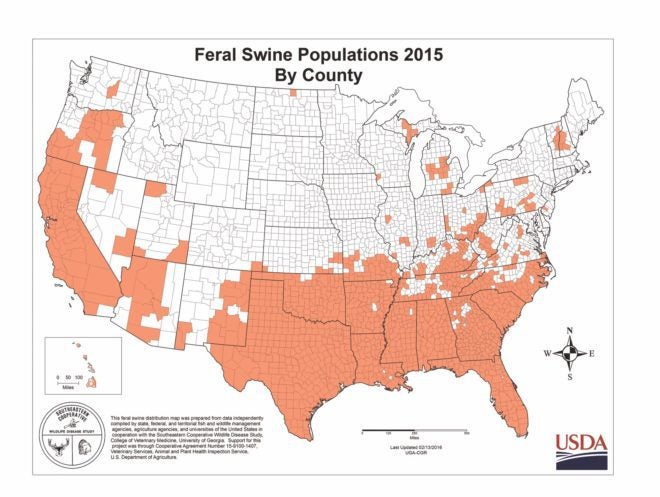New Study Predicts Spread of Wild Pigs
Kevin Felts 02.06.17

A new study on invasive wild pigs (IWP) conducted by Caesar Kleberg Wildlife Research Institute, Texas A&M University Kingsville, Department of Ecology and Evolutionary Biology, Yale University and the National Wildlife Research Center shows the expansion of wild hogs has increased from 2.17 miles (6.5km) to 7.82 miles (12.6km) per year.
The study suggest that in just another 30-50 more years, wild hogs will invade most of the continental U.S.A.
The article states:
The average rate of northward expansion increased from 6.5 to 12.6 km per year, suggesting most counties in the continental USA could be inhabited within the next 3–5 decades.
Northern movement of wild pigs has hampered by cold weather. The article notes that with climate change, the pigs will likely move north in coming years.
We identified that climate change may assist spread into northern regions by generating milder winters with less snow.
Why are feral pigs called invasive? Because pigs are not native to the Americas.
The first documented pigs brought to the United States were by Hernando de Soto in 1539. When de Soto landed in Florida his ship manifest included 200 pigs. They were to be used as food for the four-year expedition into the United States.
Furthermore, domesticated pigs that either escaped from their pens or were released to be hunted later became feral.
Why is this a problem?
In Texas alone there are an estimated two-six million wild pigs that do an estimated $400 million in damages annually. As invasive wild pigs spread west and north, their economic toll will greatly increase.
Special thanks to Guns.com for letting everyone know about the study.